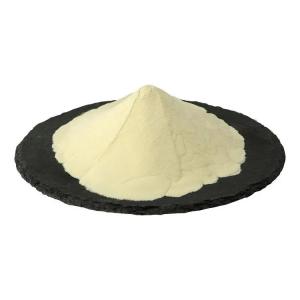The process of synthesizing structural lipids catalyzed by phospholipid enzyme
Time:2025-08-11Exploration of new processes for the enzymatic synthesis of structured lipids using phospholipid enzyme is advancing around directions such as efficient enzyme utilization, reaction system optimization, and product-specific regulation. The aim is to overcome the limitations of traditional chemical synthesis and achieve green, precise preparation of structured lipids.
Enzyme Screening and Engineering
Substrate specificity and catalytic efficiency of phospholipid enzyme are the core of the process. Natural phospholipid enzyme (e.g., A1, A2, C, D) exhibit substrate preferences during catalysis: for instance, phospholipid enzyme A2 tends to hydrolyze fatty acids at the sn-2 position of the glycerol backbone, while phospholipid enzyme D excels at catalyzing the transesterification of phospholipid head groups. Protein engineering techniques, such as site-directed mutagenesis or directed evolution, are used to modify phospholipid enzyme, enhancing their ability to recognize specific substrates. For example, mutating the active center of A1 can improve its insertion efficiency for long-chain polyunsaturated fatty acids (e.g., DHA, EPA), enabling the targeted synthesis of structured lipids rich in functional fatty acids. Additionally, immobilization technology further enhances enzyme stability and reusability—immobilizing phospholipid enzyme on magnetic nanoparticles or porous carriers not only facilitates enzyme separation and recovery post-reaction but also enables batch production in continuous flow reactors, reducing industrial costs.
Innovation in Reaction Systems
Innovations in reaction systems are key to improving synthesis efficiency. Traditional solvent systems (e.g., organic solvents) can dissolve hydrophobic substrates but may impair enzyme activity and pose safety risks. In recent years, solvent-free systems, ionic liquid systems, and supercritical fluid systems have become research hotspots:
Solvent-free systems utilize the intrinsic fluidity of substrates to create a reaction environment, reducing solvent-induced enzyme toxicity while increasing substrate concentration. For example, in the transesterification of triglycerides and phospholipids, solvent-free systems can boost structured lipid yields by 20%-30%.
Ionic liquids, as green solvents, offer excellent thermal stability and solubility, providing a suitable microenvironment for phospholipid enzyme. In the synthesis of structured lipids containing short-chain fatty acids, for instance, ionic liquids promote substrate-enzyme interactions, shortening reaction times.
Supercritical CO₂ systems, characterized by low viscosity and high diffusivity, accelerate mass transfer and simplify product separation, making them particularly suitable for synthesizing thermosensitive structured lipids.
Product Regulation and Functional Design
Regulating products and designing functional lipids are important goals of new processes. Precise control over the fatty acid composition and distribution of structured lipids can be achieved by adjusting reaction parameters (e.g., temperature, pH, substrate molar ratio). For example, in phospholipase-catalyzed esterification of glycerol and fatty acids, controlling the substrate molar ratio at 1:2 and maintaining pH 7.0 prioritizes the synthesis of symmetric structured lipids with functional fatty acids (e.g., conjugated linoleic acid) at the sn-1,3 positions—lipids with potential roles in improving human lipid metabolism. Furthermore, multi-enzyme synergistic catalysis expands the range of structured lipids: combining phospholipid enzyme C and lipase, for instance, first hydrolyzes phospholipids into diglycerides and phosphocholine, then uses lipase to catalyze transesterification between diglycerides and specific fatty acids, yielding composite structured lipids with both phospholipid head groups and unique fatty acid chains. Such lipids show promise in food emulsifiers and drug carriers.
Industrial Feasibility
Developing new processes must also consider industrial viability. For example, continuous reaction devices enable continuous substrate feeding and real-time product separation, while online monitoring technologies (e.g., near-infrared spectroscopy) allow real-time regulation of reaction progress, improving production efficiency. Exploring low-cost enzyme production methods (e.g., microbial fermentation) and renewable reaction media will help reduce process costs and promote large-scale production of structured lipids.
In the future, with the deep integration of enzyme engineering and reaction engineering, new -catalyzed processes for structured lipid synthesis will exhibit broader applications in functional foods, pharmaceuticals, cosmetics, and other fields.


 CN
CN





